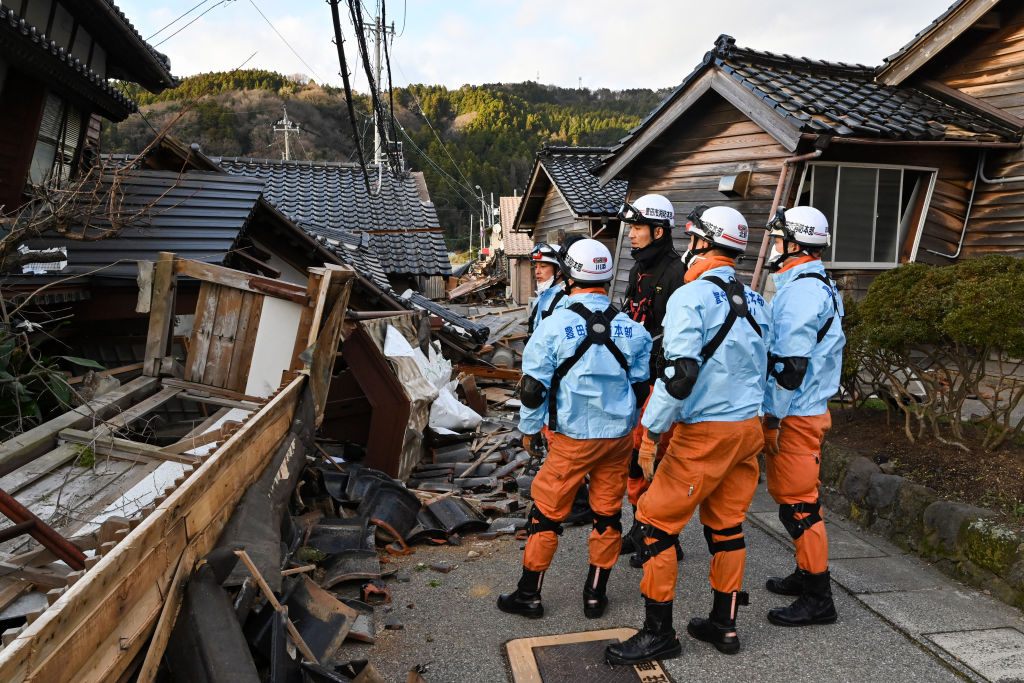Recently on high alert, Japan is no stranger to earthquakes, being in one of the most seismically active regions in the world. However, megathrust earthquakes, which experts are increasingly concerned about, are a different magnitude of danger, even for a country accustomed to such natural disasters.
In addition to the undoubted human catastrophe, a natural disaster of this magnitude could devastate the nation’s infrastructure and send shockwaves through global semiconductor supply chains. The country’s critical role in the global tech industry makes this threat not just a national concern but a global one.
“Nankai megathrust earthquakes,” which take place along the fault line under the Nankai Trough—a major tectonic boundary off southern Japan—have occurred only nine times in the past 1,400 years, each time registering a magnitude of 7.2 to 8.0.
The disruption of Japan’s semiconductor industry in the aftermath of such a catastrophic quake would have global ramifications. Japan is a key player in producing semiconductors and the specialized equipment needed for their manufacture. The COVID-19 pandemic underscored the critical importance of these components, and the resulting semiconductor shortage highlighted their vital role in powering everything from smartphones to cars.
A significant disruption could lead to a worldwide shortage, severely impacting industries and economies around the globe.
While Japan accounts for about 15 percent of the global semiconductor value chain, it holds more than 90 percent in manufacturing equipment that creates circuits on wafers and more than 50 percent in wafer production, according to the Semiconductor Industry Association, a trade organization based in Washington.
Imminent Threat?
The latest warning comes in the wake of recent seismic activity in Miyazaki Prefecture, a rural region on Kyushu’s eastern coast in southern Japan, facing the Pacific Ocean.
Miyazaki, near the Nankai Trough, is prone to powerful earthquakes. Significant tremors in Miyazaki often indicate stress buildup along connected fault lines, potentially signaling a larger, more devastating Nankai earthquake. Historically, Miyazaki’s seismic activity has preceded major quakes in the Nankai area, raising concerns among experts about future large-scale disasters.
“It’s like Russian roulette; the bullet is already in the chamber,” said Toshiyasu Nagao, head of the Earthquake Prediction Research Centre at Tokai University, warning of an imminent megaquake. “It may not have come out this time, but it could be the next one or the one after that. A megaquake could strike in the 2030s, and it’s almost inevitable by the 2040s or 2050s.”
On Aug. 8, the region was jolted by a 7.1 magnitude earthquake, which injured dozens and damaged at least 53 residential buildings. The tremor disrupted essential services, including water supplies, highlighting the fragility of infrastructure in the face of such natural threats.
This event prompted Japan to issue its first-ever megaquake alert on Aug. 8, urging residents to prepare by reviewing evacuation plans and bracing for potentially more severe shocks.
In response to the escalating threat, Japanese Prime Minister Fumio Kishida took the unprecedented step of canceling his Central Asia tour scheduled from Aug. 9 to 12, citing his current focus to “ensure that the government’s response and information dissemination are in order.”
A Historical Perspective
The Nankai Trough has produced some of the most devastating earthquakes in Japanese history, with records dating back nearly 1,400 years. These events typically occur every 100 to 150 years. The last major quake was recorded in 1946, and another may be in striking distance.
Takashi Yokota, a member of the Nankai Trough Earthquake Evaluation Review Committee and a professor at Aichi Institute of Technology, noted that the recent 7.1 magnitude quake could trigger subsequent earthquakes reaching up to magnitude 8.
A tsunami following such a quake could be the most lethal consequence, with waves reaching up to 30 meters in some areas, according to a 2012 Japanese government assessment. This could result in up to 323,000 fatalities and force up to 9.5 million evacuations, with tsunamis accounting for nearly 70 percent of the predicted deaths, according to one estimate.
Nagao said that unlike the 20 to 25 minutes of lead time people had during the 2011 Tohoku quake, residents near the Nankai Trough may have almost no time to react before the tsunami strikes. Simulations indicate that 3-meter-high waves could reach certain coastal areas in as little as three minutes.
Global Implications
The economic fallout from a Nankai megathrust earthquake could exceed $1.5 trillion, according to government estimates, with profound repercussions for Japan’s economy and the global tech landscape. This figure dwarfs the losses from the 2011 earthquake and represents about 37 percent of Japan’s GDP for 2023.
Satoshi Fujii, an engineering professor at Kyoto University, warned that the aftermath could “depress Japan’s economy for 20 years,” calling it a “true national calamity.”
Japan’s integral role in the global semiconductor supply chain means that the impact of such a disaster would reverberate far beyond its borders. The 2011 earthquake exposed this vulnerability when a damaged semiconductor factory in Ibaraki Prefecture disrupted global automotive production for months. This facility was crucial for manufacturing microcontrollers for car engines, holding a significant portion of the global market.
With no further major seismic events detected by mid-August, the country has now lifted the megaquake alert. However, the looming threat serves as a stark reminder of the fragile balance between nature’s forces and the intricacies of modern industry.

